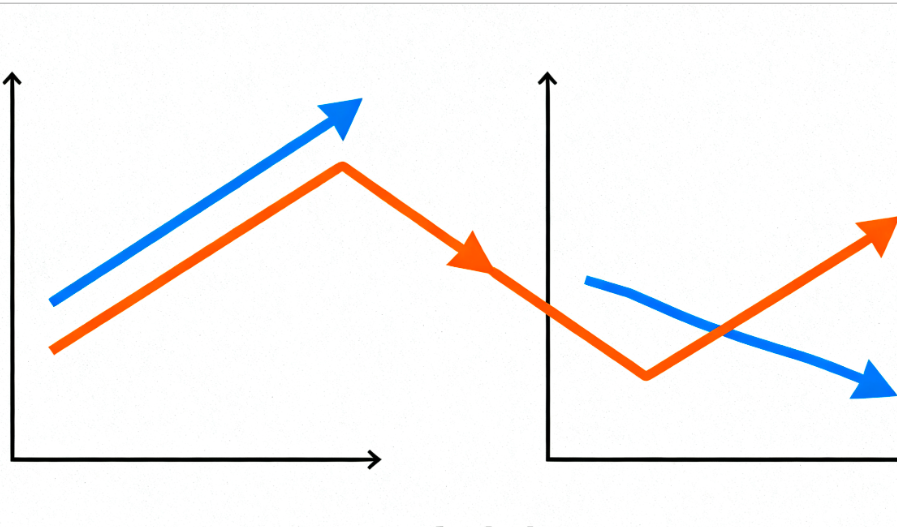
Prediction markets are becoming the new darling of Wall Street.
This month, Intercontinental Exchange (ICE), the parent company of the New York Stock Exchange, invested $20 billion in the decentralized prediction market Polymarket. This marks not only one of the largest private financing rounds in crypto history but also skyrocketed Polymarket's valuation to $90 billion. Recently, further market news emerged that Polymarket is in early-stage discussions with investors, seeking financing at a valuation between $120 billion and $150 billion.
Interestingly, just four months ago, Polymarket's valuation was less than one-tenth of its current level. If we rewind to 2022, Polymarket was even pursued by regulators.
Polymarket's soaring valuation is astonishing, and prediction markets are once again in the market spotlight.
When mentioning Polymarket, the first association that comes to mind is prediction markets. What is a prediction market? Despite the fancy terminology, the essence of a prediction market is simply probabilistic betting or, more bluntly, a variant of gambling. Of course, this method is not identical to pure speculation; the act of betting itself hinges on the mastery of information and probability prediction, which can be more aptly called an "information war." Using price to determine probability is clearly the most objective carrier for reflecting the direction of information.
Tracing its origins, the earliest prediction markets can be dated back to the 16th century when various betting pools were set up around the papal elections in Rome, Italy. By the 18th century, the scope of betting pools gradually expanded, evolving from single questions to "betting on anything." After the 19th century, the US presidential elections, a global political hotspot, ignited passion in prediction markets, leading them towards prosperity. However, as predictive methodologies centered around "statistics" were refined, the "irrational" characteristics of prediction markets caused them to take a backseat. Despite this, the spark of prediction markets never died out. The Iowa Electronic Markets, a non-profit experimental project operated by the University of Iowa, successfully demonstrated the potential of prediction markets during the 1988 presidential election, becoming one of the earliest and most famous prediction markets. Subsequently, entities like the Hollywood Stock Exchange, Policy Analysis Market, Intrade, and PredictIt continuously emerged. Prediction markets evolved from centralized to decentralized, ultimately shaping the current development landscape of prediction markets.
Polymarket is a representative of decentralized prediction markets. It's worth noting that Polymarket is not the first decentralized prediction market application. As early as 2018, the decentralized prediction product Augur appeared on Ethereum. However, its development fell into the rut of the traditional crypto space, not only using a platform token for betting but also focusing on the completeness of smart contracts rather than user experience, ultimately leading to its failure.
Polymarket learned from its predecessors' lessons, placing significant emphasis on user experience, both in terms of mechanisms and interface. Polymarket was initially built on Ethereum smart contracts and later migrated to the more scalable sidechain Polygon. Users can participate simply by connecting a wallet, without needing identity verification, and the only supported betting currency is USDC, ensuring stable stakes.
Architecturally, Polymarket employs the Conditional Token Framework (CTF) developed by Gnosis. Users bet by purchasing conditional tokens representing specific outcomes and are introduced to the concept of combinations for convenient bundled purchases. The market mechanism relies on the Central Limit Order Book, more commonly used in traditional financial markets, for market making, constructing a hybrid architecture of off-chain matching and on-chain settlement to ensure a smooth user experience.
It sounds quite complex, but from the user's perspective, it's very simple to use: bet with stablecoins; questions correspond to markets with only binary "Yes" or "No" options; a correct prediction yields $1, an incorrect one yields $0. Under the CTF framework, the price represents the probability of the event occurring. For example, if a "Yes" share costs $0.69, it indicates a 69% perceived probability of that event happening.
From infrastructure setup to smart contract operation, it's evident that Polymarket is a pure decentralized application. In this prediction market, the platform is not the counterparty, there's no concern about the "house cut," no large-scale public opinion guidance or information bombardment, and no one even knows who you are – you bet solely based on your own judgment.
Leveraging these advantages, Polymarket, born in 2020, quickly experienced explosive growth. Its trading volume exceeded $1 billion in 2023, and in 2024, it gained wider recognition by successfully predicting aspects of the US election, with that year's total trading volume soaring to $8.6 billion, making it a top application in the prediction market space. In the first half of this year alone, Polymarket's trading volume reached $6 billion, and its cumulative total trading volume to date has exceeded $20 billion.
Despite this seemingly smooth development path, it has not been without its twists and turns. Polymarket's mechanism is difficult to define from a regulatory perspective. It can be viewed as gambling, but also considered a binary option swap, because unlike traditional gambling, contracts on Polymarket can be traded before the event concludes. For example, if a user buys a "Trump wins the election" share for $0.10, and later the price of that share rises to $0.40, the user can sell the share to realize a profit, even if the event hasn't concluded yet. This mechanism has very clear advantages and disadvantages. The advantage is that it truly transforms prediction markets from focusing solely on outcomes to trading the process; bets can change in real-time based on the evolving context, allowing for volatility arbitrage and offering greater flexibility in betting. However, inevitably, it turns betting contracts into a tradable financial derivative.
Against this backdrop, in 2022, Polymarket was charged by the US CFTC for operating an unregistered exchange offering illegal off-exchange trading. Ultimately, Polymarket settled with the regulator, agreeing to a $1.4 million fine and exiting the US market. In 2024, after Trump prominently led in election predictions on betting markets, Polymarket faced even stronger scrutiny from US authorities. In November, the FBI raided the home of CEO Shayne Coplan, seizing his personal electronic devices. Investigations by the US Department of Justice and CFTC followed, faintly suggesting a political crackdown to the market.
However, after Trump took office, the overall environment changed rapidly. Almost all adversaries from the Biden era were treated courteously by Trump. In July of this year, the US Department of Justice and CFTC dropped their investigations into Polymarket. Soon after, Polymarket announced the acquisition of QCX LLC and its affiliated clearing house, QC Clearing LLC, for $112 million – a small derivatives exchange holding a CFTC license. Polymarket's strategy became clear: to re-enter the US market through acquisition. In September this year, QCX received a no-action letter from the CFTC, formally clearing the main obstacle for Polymarket's return to the US market.
After solving the compliance piece, investors flocked. In January, Polymarket completed a $150 million funding round led by Founders Fund and Dragonfly, reaching a valuation of $1.2 billion. In October, Polymarket secured the $20 billion investment from ICE (parent of NYSE), valuing it at $90 billion. Most recently, market rumors suggest Polymarket is planning its next funding round at a $120 billion valuation. Interestingly, 1789 Capital, the venture fund of Donald Trump Jr., is also among its shareholders, indirectly affirming Polymarket's legitimacy.
Today, Polymarket has risen to become a giant in the crypto market, with a staggering weekly trading volume reaching around $1 billion. When discussing prediction markets, Polymarket is now an unavoidable topic. For users, how the platform works isn't paramount; personal profit is the core. Notably, Polymarket's CEO has previously hinted at issuing a token, fueling significant market anticipation. However, given the scale of recent investments, an IPO might better align with its current market positioning.
On the other hand, despite the bright prospects, Polymarket has its underlying issues. First, there are vulnerabilities in its technical mechanism. Polymarket uses the UMA protocol as its decentralized oracle solution, responsible for reliably writing real-world event outcomes onto the blockchain. It relies on the UMA oracle to determine results, but decentralized oracles don't always identify the correct answer. The general process for oracle determination is: after an event occurs, if there are no disputes, the result is published directly; if disputed, it enters a dispute resolution voting period where users holding UMA tokens can vote on the dispute, with the final outcome based on that vote. This seemingly fair scheme has a fatal flaw: in this scenario, large holders of UMA tokens wield significant influence and can potentially "fabricate the truth." In March of this year, regarding the event "Will Ukraine reach a rare earth trade deal with Trump before April?", the real-world outcome was "No," but the oracle ultimately determined it as "Yes," because large token holders manipulated the oracle to change the result. Furthermore, even excluding oracle issues, the subjectivity of decentralized voting can affect practical judgment. When facing ambiguous answers, the lack of impartial judgment can lead to disputes.
Second, regulatory uncertainty remains. Although the current US administration has significantly loosened regulations on the crypto market, gambling regulations haven't been fully lifted. Issues inherent to Polymarket, such as market manipulation and insider trading, remain unresolved, creating regulatory ambiguity.
Beyond these issues, market challenges are also emerging. In the prediction market space, Polymarket and Kalshi are presenting a competitive rivalry. In terms of differentiation, the former is more crypto-native, emphasizing decentralization, and covers a wider range of prediction areas including politics, economics, sports, and entertainment. The latter, Kalshi, uses compliance as its competitive edge, being a CFTC-approved compliant exchange, making it more attractive to institutional users and those outside the crypto space. Although Polymarket currently holds an absolute lead in trading volume and brand recognition, the latter shows clear potential for catching up quickly. Kalshi's market share, calculated by weekly notional trading volume on the Dune platform, rose from 8% in January 2025 to 66% in September 2025. Although it has since retreated to 46.6%, its growth momentum remains strong. Even in recent financing, Kalshi is keeping pace, with rumors that it is also receiving financing offers from venture capital firms, with a valuation range of $100 billion to $120 billion.
Competition is intensifying, but the heavy bets from capital indicate that prediction markets are rapidly rising with sweeping momentum. Whether it's Polymarket or Kalshi, they are merely individual investment targets within this broader trend. As for why prediction markets are so important, the key lies in the information pricing behind them. Probability reflects information, and information is manifested through price. This method of pricing decisions pushes decision-making from "timely reaction" truly towards "information-based prediction."
Traditional media can serve as an analogy here. Media is highly valued in the financial sector due to its information transmission nature and the potential market repercussions it can cause. However, as media aligns more closely with financial and political groups, it drifts away from its original impartiality and independence, beginning to convey certain biases, even being controlled by a minority elite. The emergence of prediction markets now serves as a valuable supplement. Betting with price reflects internal sentiment and signals more accurately and distinctly, and the feedback from price fluctuations is more real-time. In other words, prediction markets are becoming a new type of information medium. This medium releases the power of information pricing, once concentrated among elites, to the public, achieving timely feedback on event-driven data through volatility. This represents not just simple betting prediction, but a paradigm shift in deep-seated price discovery systems. The value contained within is self-evident.
For instance, events that some media outlets deem unimportant or overlook might receive significant attention in prediction markets. And this attention is precisely the root of price. For publicly listed companies, this can be more valuable than year-after-year financial reports and marketing advertisements. This might also be one reason behind the NYSE's investment in Polymarket – supplementing the traditional asset pricing system with the pricing of expectations and attention is precisely an embodiment of adapting to objective trends. It is reported that ICE, through this investment, obtained global distribution rights for Polymarket's event-driven data and plans to apply it to its next-generation tokenization projects.
Despite the promising前景, ethical concerns persist. The ability to bet on anything implies the financialization of everything, and in a sense, even the entertainment-ization of everything. But some events should not be entertainment-ized. When these two collide, what future will prediction markets face?
Of course, it's still too early to discuss that. Before that, prediction markets still have a long way to go.
















